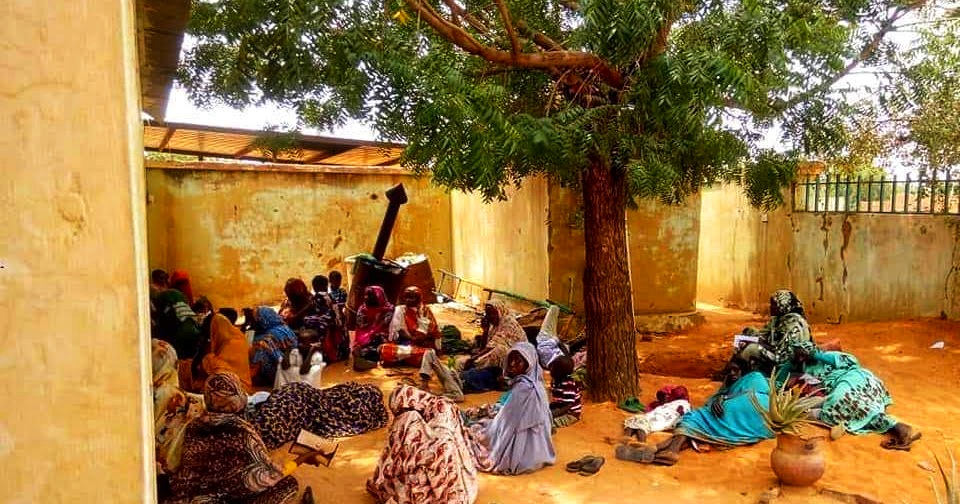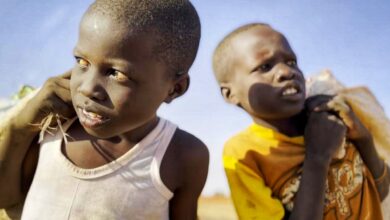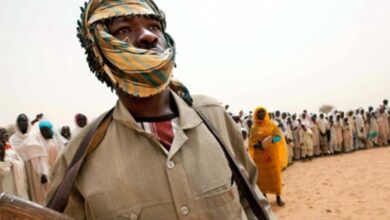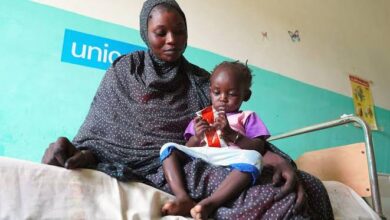Sudanese Women Face Hunger with Labor and Violations with Resilience
Mashawir – Agenciey

As the war in Sudan drags on and its scope expands, Sudanese women have paid a heavy price. Most have suffered severe harm, including physical and sexual violence, amid a lack of justice and accountability for perpetrators. They also face unimaginable challenges—whether in displacement shelters, remote and neglected villages lacking the most basic standards of a dignified life, or even in relatively safer cities overwhelmed by poverty, inflation, and deadly epidemics.
Despite the tragedies and humanitarian suffering endured by women and girls, aid and services provided to them are dwindling due to funding shortages. The suspension of U.S.-funded humanitarian aid programs threatens to deprive 260,000 women in Sudan of reproductive health services and access to safe spaces, according to the United Nations Population Fund (UNFPA). The freeze also halts training for frontline medical workers and strips 10,000 women of access to medical, legal, psychological, and social support services.
Worsening Situation
UNFPA warned that its sexual and reproductive health programs and safe spaces in North Kordofan State, funded by several countries, are at risk due to the funding shortfall, putting the health and lives of hundreds of thousands of women and girls in danger.
The agency noted a significant deterioration of the situation in Sudan, particularly amid growing reports of sexual violence being used as a weapon across the country.
UNFPA emphasized that the funding crisis would stop frontline medical training and deprive 10,000 women of access to crucial support services, while 260,000 women would lose reproductive health services.
UNFPA is seeking $119.6 million this year to provide reproductive health and protection services through 90 mobile health teams, 120 health facilities, and 51 safe spaces.
A Core Issue
In this context, women’s rights activist Najlaa Mahdi stressed that protecting women has become a fundamental issue that must be prioritized by all organizations advocating for them and monitoring their conditions since the armed conflict began. She emphasized the urgency of reigniting this issue, especially in the current situation where organizations in this field are absent.
Mahdi explained that the freeze in humanitarian aid funding denies women and girls clinical treatment and psychological counseling after rape and sexual assault, as well as legal referrals and access to reproductive healthcare and medical training.
She urged the U.S. government to reconsider the suspension of aid and resume its humanitarian support to Sudan. She also called on the international and regional community to exert pressure and intervene to support famine-affected communities and provide aid, medical services, and protection to displaced women both inside and outside Sudan.
A Humanitarian Catastrophe
Similarly, Nadia Mahjoub, a member of the “Women Against Oppression” campaign, stated that denying thousands of girls their basic rights to reproductive healthcare and support services amid the current conflict constitutes a humanitarian catastrophe, for which the state bears primary responsibility.
She pointed out that armed conflict is the opposite of what women need—it cuts them off from services and fuels inequality, especially among refugees and displaced persons, creating the worst imaginable conditions.
Mahjoub added that many women require support not only during pregnancy and childbirth but also in response to harmful practices like gender-based violence, and in need of psychological and legal assistance.
Obstacles and Hardships
On a related note, Salima Ishaq, director of the Unit for Combating Violence Against Women and Children, stated that Sudanese women have paid a heavy price during the war. Despite the rise in violations, their determination has not faltered. She emphasized that women have proven themselves capable of leading community peacebuilding efforts and bridging social divides. In the darkest of times, they’ve shown a unique ability to overcome differences, break cycles of hate, and sow seeds of harmony.
She added, “We face great difficulties in reaching surviving women and girls, who are constantly displaced and on the move from one area to another. This complicates aid delivery efforts, in addition to communication and internet service outages and poor healthcare infrastructure.”
Ishaq underscored the state’s obligation to protect women from all forms of violence and discrimination and to incorporate a gender perspective into all national policies.
Funding Shortages
Community activist Sahar Khairy highlighted the catastrophic scale of the health crisis, which has reached unprecedented levels. Sudanese women now face enormous hardships and threats, whether as displaced persons or those still trapped in active conflict zones. She particularly noted the frightening deterioration of conditions on the ground, especially with the collapse of the healthcare sector and the shortage of essential medicines.
She added that with limited funding, responsibility falls on all stakeholders in the humanitarian field to urgently provide the necessary support.
Khairy also noted that “Sudan’s crisis is not receiving sufficient international attention, despite the worsening humanitarian situation and the collapse—or complete absence—of essential services. This neglect exacerbates the suffering of women, who urgently need aid.”
Dangers and Challenges
The United Nations estimates that 12.1 million women, girls, and men in Sudan will face risks of gender-based violence in 2025—an 80% increase from the previous year.
Since the outbreak of war between the Sudanese army and the Rapid Support Forces, the World Health Organization, UNFPA, and other partners have warned that ongoing attacks on health facilities will have catastrophic effects on the healthcare sector—especially the targeting of maternity hospitals that provide sexual and reproductive health services and family planning consultations.
According to recent WHO statistics, over 4 million women of reproductive age—among them around 500,000 pregnant women—have lost access to vi
tal healthcare and face severe risks and challenges.




